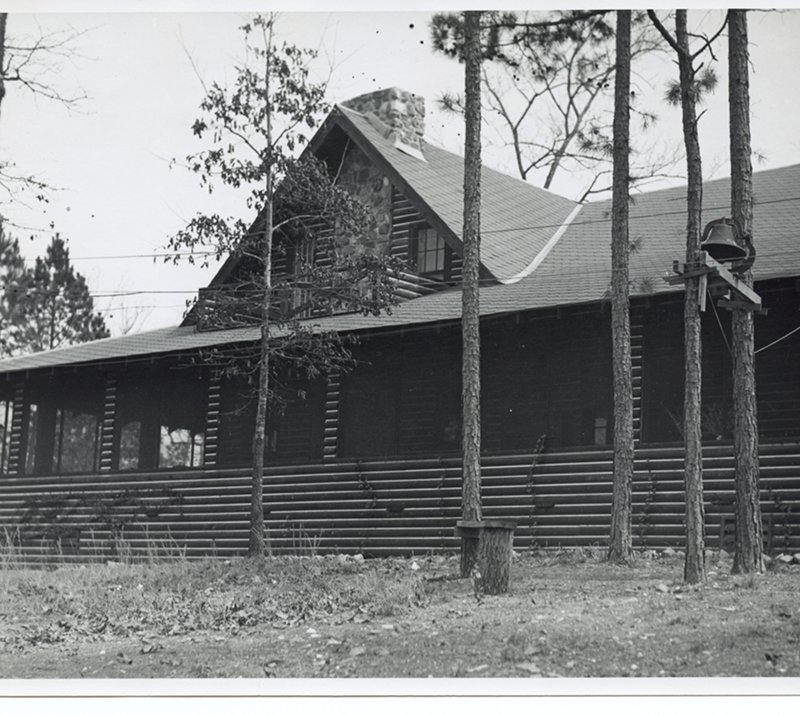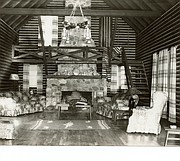EDITOR'S NOTE: The Sentinel-Record today continues its semiweekly feature, "This Week in Hot Springs History," which will revisit moments from Hot Springs' colorful past as detailed in the daily newspaper. Similar to the "Today in History" feature, which focuses on national and international events, this recounts events that occurred in Hot Springs at different periods throughout the past. Today's installment features excerpts from stories that appeared 80 years ago this week.
On March 21, 1936, with the idea of giving their hotel guests an opportunity to enjoy fishing and water sports, the Majestic Hotel announced it had purchased the old Lockport Lodge on a 10-acre estate on Lake Hamilton. Located a short distance off Highway 70, the log-cabin style structure featured spacious screen porches, a huge living room with a fireplace "to cozy up to," and four private dining rooms "all offering beautiful lake vistas," according to the Majestic's manager, Bruce Wallace. Improvements being made included new landing piers, boat houses and landscaping.
The paper noted the lodge already had its first event scheduled for March 25, a meeting of the Southern Commercial Secretaries, which would be in town to attend the races. A garden truck farm and chicken ranch were being operated in conjunction with the enterprise. The paper stated the lodge was built a few years earlier by George Lock and would "hereafter be known as Majestic Lodge."
(The lodge, which was destroyed by fire on May 23, 2010, was located just past the entrance to where Hill Wheatley Park is located today on Majestic Lodge Road).
That same day, Samuel Jodie Wingfield, 43, a farmer from Elnora in Montgomery County, was fatally stabbed in a fight near Mount Ida. Another farmer, W.B. Deramus, of Mount Ida, was alleged to have stabbed him and was being held in the Garland County jail. The fight occurred at the home of Carl Miller about one mile east of Mount Ida and was said to have resulted from an argument over old difficulties between the two men. Sheriff Glaze noted both men were drunk and Wingfield was taking off his coat when Deramus suddenly stabbed him in the chest with a pocket knife, which penetrated his heart, killing him instantly. Deramus turned himself in and was brought to Garland County for "safekeeping."
On March 22, 1936, two young men were killed and four others injured in an auto accident that occurred around 2 a.m. on Arkadelphia Road, two miles south of Hot Springs on Lake Hamilton. Bob Jefferson, 21, and another youth who had not been identified by presstime were killed. Jefferson, an employee of Liberty Cash grocery store in Hot Springs, was in one vehicle with his store manager, H.C. Johnson, 35, and two other store employees, who were all injured and taken to Levi Memorial Hospital. In the other vehicle were Eddie Longinotti, 19, son of James Longinotti, a local hotel proprietor, and a second man, who was identified in the next day's paper as Virgil Nims, 23, of Hot Springs, who was killed.
Gross ambulance attendants who "answered the call" initially found three wrecked cars, two demolished and one in a ditch. It was later discovered the one in the ditch had been wrecked and abandoned earlier. Longinotti later stated he and Nims had driven to the lake after a fraternity dance at the Elks Club and were returning to town when they collided with the second vehicle which was headed to the lake. Both vehicles were traveling at high rates of speed.
Also on March 22, the paper reported the WPA (Work Progress Administration) were preparing hot lunches daily for 500 underprivileged children enrolled in the nine schools in Hot Springs, which was sponsored by the Hot Springs School Board, the Counsel of the PTA, the colored PTA and Lions Club. It was noted Clara Beam headed the program with 31 female staff members functioning out of 10 kitchens. Each meal included a bottle of milk, a hot dish, fruits and vegetables, and it was noted the program had increased school attendance and student performance. Some schools, including Jones, Ramble and Langston, had cafeterias where WPA employees were added to the current staff. At Greenwood, there was no cafeteria so the auditorium was set up as a dining hall, with seat arms raised to serve as tables.
On March 23, 1936, car theft charges were dismissed against three youths from New York City, one aged 16 and two 17, at the recommendation of the prosecuting attorney. The three had run away from home a week earlier and came to Hot Springs to play the races. They stole a 1934 Ford two-door sedan from 1026 Malvern Ave. "when their money ran out," and were arrested in Malvern by Hot Springs Police Chief Joe Wakelin and officers George Young and Garrett Moore. Municipal Court Judge Ledgerwood ordered the boys to "go home" and had them put on the next train out of town.
In the same edition, C.E. Palmer, president of Southern Newspapers Inc., announced the appointment of Charles Goslee as assistant manager of the New Era and The Sentinel-Record. It was noted Goslee had been connected with both papers for 23 years and had served as editor of the New Era for 17 years. "We feel sure his thousands of friends will be glad indeed to see him win this well deserved promotion," Palmer said.
On March 24, 1936, S.S. Williams, 35, of New York, who was charged with operating a "book" operation at Oaklawn in violation of Arkansas pari-mutuel laws, was fined $100 and sentenced to 90 days in jail. He argued he was "only betting among friends."
That same day, it was reported Garland County Red Cross officials had collected $500 for "flood ravaged" victims in Ohio. Although "a great deal" was collected from visitors to the city, the majority came from local persons and it noted, "Garland County residents were showing their appreciation for the help they had received from the Red Cross in previous years."
On March 25, 1936, R.C. Isom, 43, a grocer from Mena, was free on bond after being indicted by a Garland County grand jury for obtaining money under false pretenses and passing "worthless checks," with victims including the C.J. Horner Co. and Hilton Furniture Store. Isom reportedly shot himself in the heart and died shortly before noon while sitting in a truck parked at the end of Wade Street. No suicide note was found, but he had sent a letter to his bondsman asking him to tell the prosecuting attorney and judge he had no money to pay the several hundred dollars in debts he owed because of his activities. His case had not been set for trial yet.
On March 26, 1926, a newspaper reporter attended the open house of the WPA Sewing Room, located on the third floor of the old Hamp Williams hardware building. It was noted 167 women were employed there "making everything from beautifully designed quilts to simple cotton handkerchiefs." All the women employed had "no other means of support and most had dependent children." The youngest was 19 and the oldest was 83, who "while wearing her black horn-rimmed glasses perched on the end of her nose was running her sewing machine as fast as anyone else in the room." All the finished products were turned over to the Garland County Welfare Association. The article noted the women "don't feel their weekly pay comes from a slave job," and that the project was keeping all of them off the relief rolls.
Local on 03/27/2016

